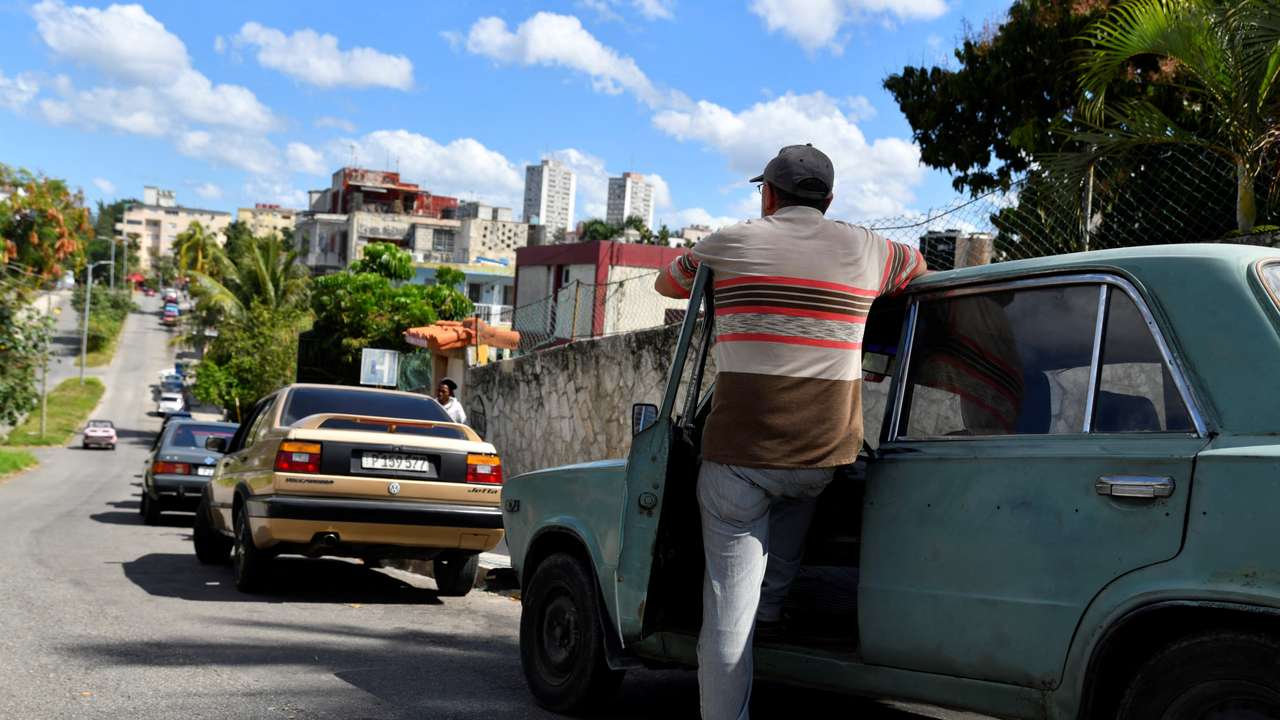Cuba import data casts doubt on official 'fuel crisis' explanation

Cuba import data casts doubt on official 'fuel crisis' explanation
By Dave Sherwood and Marianna Parraga
At a small cafe in the town of Bejucal outside of Havana, owner Germán Martín tries to organize his life and business around increasingly frequent blackouts. It is not easy.
Although occasional outages are a fact of life in Cuba, it has gotten worse lately, says Martin. Sometimes the power goes out for four hours, or six, unusual for a time of year when cooler weather normally means lower demand and fewer outages.
"You learn to adapt, but its uncomfortable and bothersome," he said as he scrambled to prepare meals in the half-light.
Government officials blame a lack of fuel to feed thermoelectric power plants, a shortage that now affects nearly all facets of daily life on the communist-run island.
On Saturday, the government suspended all sports tournaments - including popular national baseball and soccer league games - until further notice, citing a lack of public transportation due to the "fuel crisis".
Long lines have formed at gas stations, many of which have been without supplies for days.
And the country's power grid is running deficits at times over one-third of total demand, leading to hours-long blackouts across much of the island.
The government says U.S. sanctions, which have for decades complicated financial transactions and the purchase of fuel by Cuba, have combined with an increasingly acute economic crisis to bring the fuel shortfall to a head.
But a Reuters tally of fuel bought by the Caribbean island and delivered to its ports suggests that a lack of supplies may be less of a problem than internal infrastructure and logistics issues.
Cuba's economy demands about 125,000 barrels per day of fuels, including motor gasoline, diesel and fuel oil for electricity generation, according to the most recently available 2021 data from its Office of Statistical Information (ONEI).
Cuba has a steady domestic oil production of about 40,000 bpd that is mostly burned for power generation, and receives 56,000 bpd of crude and finished fuel from Venezuela, according to LSEG vessel monitoring data and documents from state company PDVSA.
Mexico, which last year became another source of oil and fuel for Cuba, supplies its ally with an estimated 23,000 bpd. As much as 10,000 bpd of diesel, cooking gas, gasoline and jet fuel have also arrived in recent months, mostly from Europe after spot market purchases, the data showed.
In total, then, it is receiving some 129,000 bpd - more than enough to cover its stated needs.
Cuban government officials did not reply to a Reuters request to explain the discrepancy between the Reuters calculations and the shortfall reported by authorities.
Jorge Piñón, who studies Cuba's energy infrastructure and supply at the University of Texas at Austin, said the discrepancy may be explained by problems with domestic infrastructure, logistics and possibly refining capacity.
"The fuel deficit that Cuba says that it has today, in our opinion, is not supply, but mostly internal logistic problems," Piñón said.
A fire in 2022 destroyed a large portion of Cuba's main oil storage terminal, Matanzas, forcing the country to resort to smaller terminals and use floating storage while they rebuild the facility, the data also showed.
"Blackouts happening in February, when demand is still low, suggest fuel production problems - only one refinery is operating - power generation problems and logistic issues," Piñón said.
In response to the crisis, Cuba's government has proposed a five-fold increase in heavily-subsidized fuel prices that it says would curb demand and raise funds needed to purchase larger volumes.
But the price hikes originally scheduled for Feb. 1 were delayed due to a cyberattack, the government said. The government has since not said when the price rise will take place.
This article was produced by Reuters news agency. It has not been edited by Global South World.